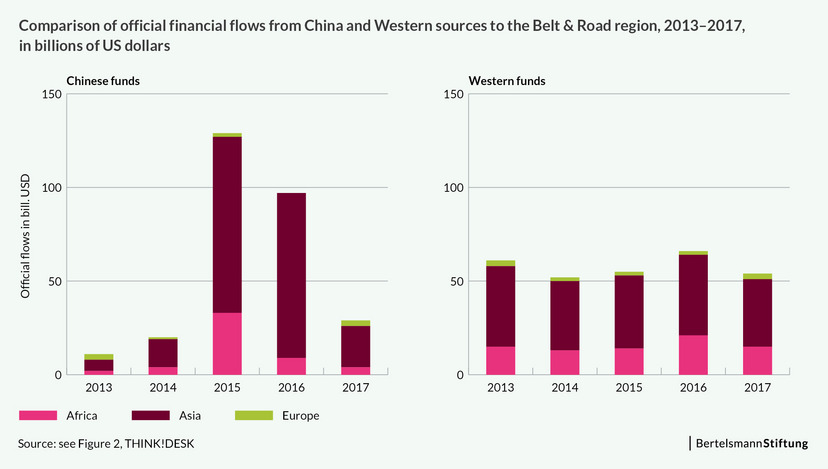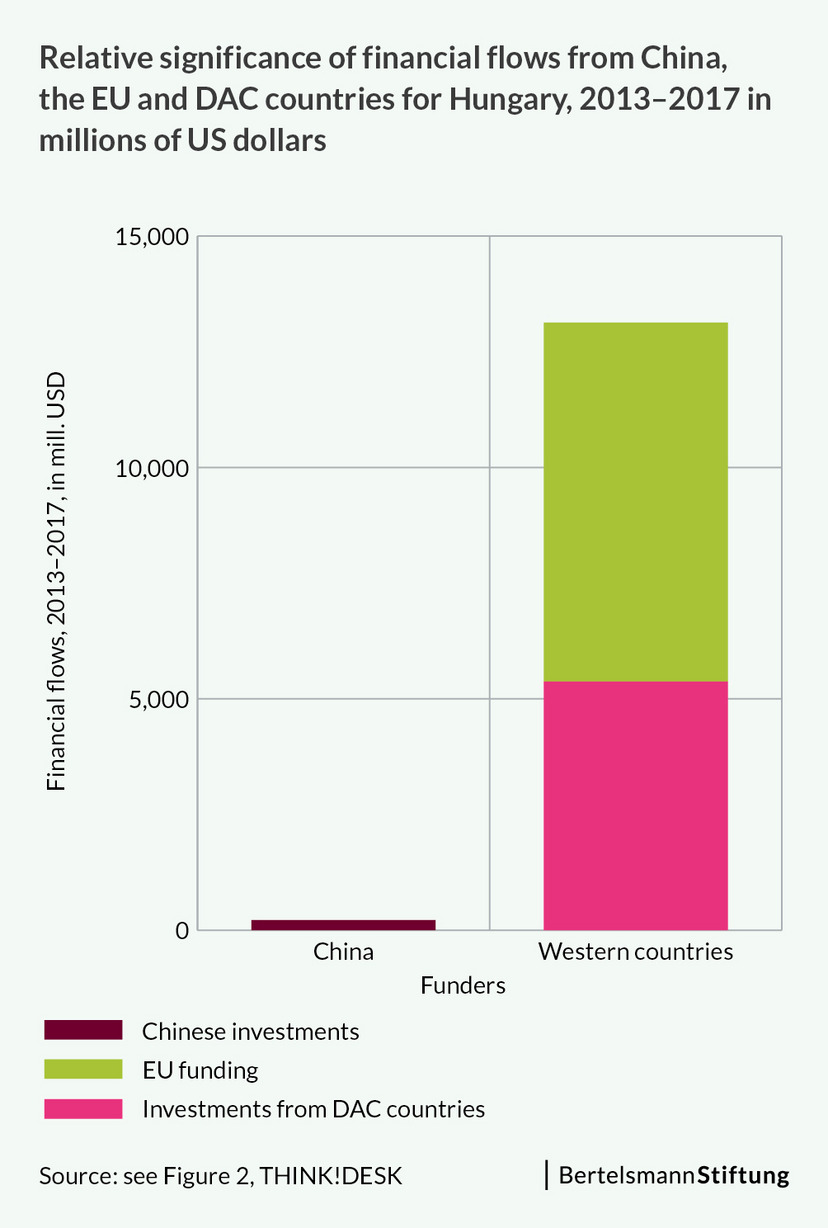China is using its "New Silk Road" to promote itself to the world. Since 2013, Beijing has made every effort politically to propagate its Belt & Road Initiative as a new development model for emerging markets. Western states are concerned about China’s economic and geopolitical ambitions and are calling for a response to the Chinese strategy.
Our study shows that the West can take a more confident stance vis-à-vis the Chinese initiative. The reason is the study’s comparison of financial flows, which reveals that, despite what is commonly believed, Western nations are investing at least as much in most Belt & Road countries.
![[Translate to English:] Geldscheine verschiedener Nationen hängen an einer Wand](/fileadmin/files/_processed_/5/6/csm_582052740AdobeStock_243955159_KONZERN_ST-DA_e2f9e3a62d.jpg)





